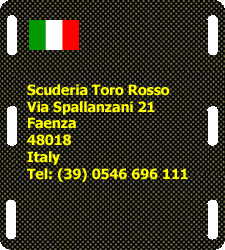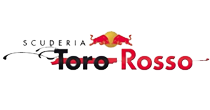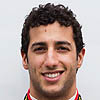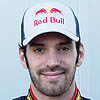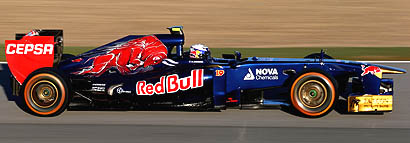|
With the Concorde Agreement coming to an end in 2007, and the threat from the Grand Prix Manufacturers' Association to form a 'breakaway' series, Formula One was in for some massive changes.
Whatever one felt about the future of the car manufacturers in Formula One, or indeed motor sport, it was a fact that the days of the 'privateers' were numbered.
It's widely assumed that Tyrrell was the last of the true privateers, the English team being bought by BAR, which was in turn bought out by Honda, however, Sauber, Minardi, Jordan and Williams, were also (essentially) private teams.
Sauber was bought by BMW, while Eddie Jordan sold his team to Russian emigre, Alex Shnaider, at the beginning of 2005.
After years of struggle it was inevitable that Paul Stoddart would eventually have to face facts and accept that in the face of the car manufacturers, Minardi was facing an impossible struggle, and the only sure fact was that the Italian team would eat up more and more of his money, and fall further and further behind the competition.
In mid-2005 there was talk of a consortium, led by former F1 star Eddie Irvine, buying out the Faenza-based outfit, however, it was Dietrich Mateschitz' Red Bull drinks company - thanks to some 'assistance' from Bernie Ecclestone - which ended up purchasing the team.
Thus, the twenty-year dream came to an end in Shanghai, though the cars made a final appearance at Vallelunga in November, when, after four days of testing, Paul Stoddart took to the track in a PS05, an emotional moment for the Australian, Gian Carlo Minardi, and the team's many fans around the world.
After just a few weeks, Red Bull was making its presence felt, appointing former BMW man, Franz Tost, as Team Principal. Although the team was initially named Squadra Toro Rosso, this was soon changed to Scuderia Toro Rosso.
In early December, in true quirky Red Bull style, Toro Rosso announced its 2006 driver line-up, with Tonio Liuzzi leading the team, Scott Speed partnering him and Neel Jani brought in as test and reserve driver.
In November and December the team ran the 2005 Red Bull chassis, while the 'self built' Toro Rosso STR1, which appeared in February at Jerez looked remarkably similar. Though many doubted the parentage of the Italian car, according to Max Mosley the FIA was "satisfied". So that was OK then.
On the same day that the STR1 'broke cover', Toro Rosso announced that former F1 star, and BMW Motorsport Director, Gerhard Berger, had bought a 50-percent stake in the team, having sold a share of his transport outfit to the Austrian company.
In addition to the controversy surrounding the obvious fact that Toro Rosso was using the previous season's Red Bull chassis, itself basically the last Jaguar car, many in the paddock, most notably Midland, which was in direct competition with then Italian team, were unhappy that Toro Rosso would use the Cosworth V10.
Although all teams had changed to the new V8 configuration, Minardi had been given special dispensation to run with V10 powerplants due to its lack of money. However, not by any stretch of the imagination could the same be said of Toro Rosso. Nonetheless, as in the case of the chassis, the FIA gave its blessing.
Although its power was regulated, there were times, particularly in the early stages of the season, when it was felt that the Toro Rosso-Cosworth was sandbagging, saving its torque 'advantage' for the power circuits. However, as the season progressed, the 16,700 rpm Cosworth (300 rpm more in qualifying) was no match for the V8s, which were reaching 20,000.
There were other problems for the Italian team however, including the fact that the aero package was compromised by the V10, which in turn negated any advantage the Cosworth might have in terms of torque.
Furthermore, due to a lack of capacity, Michelin was unable to supply tyres for serious testing, consequently ruling out any hope of development as the season progressed. Then again, at least Toro Rosso had a 'test team… a luxury that Minardi could only dream of.
Finally, Toro Rosso had the added problem that it was running two inexperienced drivers. Although not helped by Red Bull's 'pick and mix' approach to its employees, neither Liuzzi or Speed ever looked truly capable of raising their game, should they be given the opportunity.
That said, Speed gave a good account of himself in Melbourne, while Liuzzi took a well deserved point at Indianapolis. However, particularly in the case of the Italian, there was never a moment when you thought of Alonso in his Minardi season.
Going into 2007, Toro Rosso was surrounded by controversy... not for the first time.
In what many believed to be a cynical move - albeit, according to the FIA, strictly legal - the Italian team was running virtually the same chassis as Red Bull, albeit with a Ferrari engine as opposed to Renault.
Though Gerhard Berger claimed the car to be legal, Williams and Spyker were both threatening legal action, though sources were already telling Pitpass that should palms be crossed with the right amount of dosh the threats would magically cease.
As for drivers, at the unveiling of the STR2 (RB3) at Barcelona only Liuzzi was confirmed for the new season, with Berger revealing that "contractual issues" still needed to be sorted out with Scott Speed. Though the Austrian subsequently admitted that for much of 2006 he'd been disappointed with the American's lack of commitment, and still questioned his attitude, Speed was finally confirmed as the team's second driver just days ahead of the season opener.
Running the Red Bull chassis meant that Toro Rosso inherited the problems that went with it, namely poor reliability and a lack of pace. However, on the plus side, the team secured the services of former McLaren and Ferrari engineer, Giorgio Ascanelli.
While the team had its problems on track, namely public disagreements with Scott Speed, Ascanelli and his fellow backroom boys gradually improved reliability, to the point where at least one of the cars was making it to Q3 by the end of the season.
The improved reliability came round about the time Speed was finally dumped, allegedly following a physical altercation with Franz Tost at the Nurburgring, and with the arrival of the young German hot-shot, Sebastian Vettel.
Finally, in China it all came good, Vettel finishing a magnificent fourth with Liuzzi bringing the second car home in sixth, thereby giving the Faenza based outfit eight crucial points, enough to (ultimately) secure seventh place in the Constructors' Championship.
Long before the end of the season, the team had announced the signing of four-time Champ Car Champion Sebastien Bourdais, which, coupled with the retaining of Vettel, meant that Liuzzi was on his way out.
Looking back, before the start of the 2008 season, we at Pitpass have to confess to being hard on the Faenza team. On reflection this is probably because, for much of the time, Toro Rosso was seen as Red Bull's little sister, a chip off the old block. However, in 2008 the team began to develop its own character, and this, most likely combined with the demise of Super Aguri, left the Italian outfit as the underdog, a natural successor to Minardi.
With around 175 staff the team could hardly be called little, and let's not forget the car was built by Red Bull Technologies. However, as the 2008 season developed there was something of the 'little team that could' about the Faenza outfit.
The late completion of the STR3 - essentially the RBR4 - meant that the team contested the first five races with the 2007 car. Nonetheless, this didn't prevent it causing a few upsets, most notably in Australia where Vettel qualified tenth and teammate Bourdais finished seventh.
Unfortunately, a crash during testing for the Spanish GP meant that the team had to wait until Monaco before it could race the STR3, hardly the best introduction for a new car. Nonetheless, despite starting from eighteenth, Vettel finished fifth, clearly a portent of what was to follow.
It was at Magny-Cours that the team introduced its aerodynamic upgrade and from then on there was no holding back as the Faenza outfit. Other than the engine, and the drivers, there was little difference between the cars fielded by Toro Rosso and Red Bull, however, the Faenza team appeared to understand its car better.
Some would rightly argue that it was Red Bull that was doing all the experimentation, smoothing the way for its sister team, however, Ascanelli appeared to be crucial in making one car work better than the other, in particular the Faenza team's work on its braking system.
It goes without saying that the highlight of the year was Vettel's epic performance at Monza, where, having taken pole position, he followed up with a bravura performance on race day, establishing himself - as if proof were needed - as one of the real men to watch in the coming years.
Despite a shaky start, Bourdais came into his own as the season developed, both in terms of his qualifying and race performances. At Monza, his qualifying drive was almost as breathtaking as his teammate's and it was only a technical glitch before the start of the race that surely prevented him from taking a podium finish.
The Frenchman was retained for 2009, partnered by Switzerland's Sebastien Buemi, while Vettel headed to Red Bull. With a full season under his belt we waited to see how Bourdais would progress in his second year, particularly as he was no shoe-in for the 2009 drive. That said it was unlikely that Buemi would give him as much trouble as Vettel.
Over the winter, Gerhard Berger parted ways with the team handing back total control to Dietrich Mateschitz and while there was talk of the Austrian offloading the team eventually it came to nothing.
In 2008, Toro Rosso had taken a major step forward, not only as a competitive winning race team but in the hearts and minds of fans keen to cheer on someone other than McLaren, Ferrari and Renault.
Punching well above its weight in 2008 and delivering what can only be described as a bloody nose to its better funded big sister in 2009 it was back down to earth with an alarming jolt for the Faenza team. While the car was good - a Ferrari powered RB5 - the lack of testing, in-house development and a weak driver partnership saw Toro Rosso struggle.
As in previous seasons, once the new car was made available by Red Bull there began the massive task of modifying it to take the Ferrari engine - as opposed to the Renault it had been designed for - and all its other components which now included KERS.
Sadly, the Italian team was unable to match the weight distribution of its Milton Keynes counterpart which was to have a direct impact on its aerodynamic performance. For the first four races the team used the aero package featured on the original Red Bull launch car and thereafter remained several steps behind its sister team. Furthermore, it was well into the season (Hungary) before the Faenza team got its hands on Red Bull's evolved double diffuser, the Italian team using a 'standard' diffuser for the first few races.
In terms of drivers, having always been under the spotlight it came as no real surprise that Toro Rosso was eventually to give up on Bourdais, it would not be a Red Bull team if there wasn't at least one firing during the course of the season.
Following his dismissal, which for a time looked as though it might result in legal action, Bourdais was replaced by 2008 British F3 Champion Jaime Alguersuari. While the young Spaniard performed well, the new test rules meant he was always up against it.
Buemi however, was a revelation, the Swiss youngster proving far more competitive and quick to adapt to F1 than fellow GP2 hot-shot Romain Grosjean.
The points finishes for Bourdais and Buemi in Australia, the season opener, were a false start however, for while the Swiss was to finish eighth in China and the Frenchman eighth in Monaco there were no further additions to the tally until the very end of the season, the car clearly suited to the fast sweeps of Interlagos.
While Buemi was confirmed for 2010 long before the end of the 2009 season, the decision to retain Alguersuari wasn't made until late January.
However, the team's main concern for 2010 wasn't so much its driver line-up but the fact that, for the first time, it was out on its own in terms of car design. While the team didn't exactly start with a blank sheet of paper, using the Red Bull 2009 car as the foundation, it was now sailing into unknown territory.
Nonetheless, for the first time since its Minardi days the Faenza outfit was a constructor, and this should be borne in mind when looking at the end of season standings.
The first thing that Giorgio Ascanelli did was to take on more staff, creating a structural department from scratch, whilst adding more staff to the design office and windtunnel team. In terms of windtunnel work, the team used the windtunnel used by its sister team in Bicester. However, there were problems, Ascanelli famously complaining that "there was no handbook".
Although nothing special, the STR5 did the job, allowing Buemi and Alguersuari to hone their skills, even though they never seriously troubled their midfield rivals.
There were a number of upgrades over the course of the year, a new front wing package in Turkey, a new diffuser in Belgium and a blown diffuser in time for Monza. However, while the team came up with its own version of the F-duct it was never raced, Ascanelli claiming that it only ever worked in the windtunnel.
The highlight of the season had to be Buemi's eighth place in Canada, followed by a ninth at Silverstone two weeks later. However, there followed a lean period when the team failed to score a single point in six outings.
Once Williams and Sauber had come to grips with their own problems the Faenza team was essentially left for dust, ending the season ninth in the Constructors' Championship, the last of the points scoring teams.
While Buemi had his moments, there were periods when he was distinctly unimpressive, the Swiss seemingly caught out by the progress being made by his young teammate. Though the technical problems were not his fault, three accidents, not to mention being out-qualified eight times by his younger, less experienced, teammate didn't help.
Alguersuari continued to make good progress, and while he only scored three points there were some impressive moments, not least a couple of scraps with Michael Schumacher.
Both drivers were retained for 2011 however, the presence of Australian hot-shot Daniel Ricciardo as reserve driver ensured they would both be kept on their toes.
In 2010, the first year in which it was left to its own devices in terms of designing and building its car, the Faenza team suffered from not continuing to update its car in the final stages of the season. In 2011, having learned its lesson, the updates kept on coming, however, it was problems in the early part of the year that were to cost the team any hope of challenging Renault and Force India.
In the early stages of the season, the STR6, though reliable, was neither consistent or particularly pacy. However, as the season developed and the updates began appearing things began to improve. Early on, Renault and Sauber had the edge but towards the end of the season the Faenza team was making ground, and though it challenged its Swiss rivals until the very last race, Renault, having been so strong early on, was untouchable.
The team's best result came in Japan, where Alguersuari finished seventh and Buemi ninth, the Spaniard going on to score four more points in India. Nonetheless, disappointing outings in Abu Dhabi and Brazil allowed Sauber to secure 7th in the standings when by rights Toro Rosso should have nailed them.
Of course the improvement in the second half of the season could have had something to do with the fact that Buemi and Alguersuari no longer had Ricciardo looking over their shoulders, the Australian having headed off to Hispania. Never was the pressure on the duo more evident than in Melbourne when the duo collided on the opening lap. Thankfully however, both were able to continue, Buemi even managing to open his 2011 points account.
Buemi out-qualified Alguersuari thirteen times however, in the races it was the Spaniard who often had the edge, scoring twenty-points to his teammate's fifteen. That said, in Hungary, Buemi came from 23rd on the grid to finish eighth while at Monza his teammate finished seventh (a career best), going on to repeat the feat in Korea.
While neither driver had done particularly brilliantly, it can be argued that neither was particularly disappointing. Indeed, all things considered, bar the odd mistake, both gave good accounts of themselves.
Therefore, one can imagine the surprise when, on 14 December, the team announced that both drivers had been dropped for 2012 in favour of Ricciardo and Jean-Eric Vergne. Both current drivers admitted to being shocked by the news, Buemi in particular since he was in the team's simulator at the time of the announcement.
With the new driver line-up, not to mention the strengthening of its technical team in the shape of Luca Furbatto, who joined the design team from McLaren, and Jon Tomlinson, previously at Williams, who had taken on the role of Deputy Head of Aerodynamics, the Faenza outfit was seeking a serious improvement in 2012, as were the people at Red Bull who control the purse strings.
It is telling that having suffered one of its worst seasons in F1, the Faenza team, which is not known for its patience and understanding, opted to retain both of its drivers for 2013. One can only assume that this was an admission of guilt from the team, that it failed to provide Daniel and Jean-Eric with a decent car.
Eighth placed Williams scored almost three times as many points as Toro Rosso, while the only teams to score less were the three newbies - all of which failed to open their accounts.
While much was expected of Vergne the youngster was not given the opportunity to shine. That said, based on what we did see, and taking into account the equipment at his disposal, there was little to write home about. And let's not forget, it was at Minardi, in a much worse car, that Alonso showed his mettle.
Looking ahead, the one bright note is that having lured James Key from Sauber, the Englishman will hopefully lift the team - he certainly seemed to make an impression in the final stages of 2012.
On the other hand, as Red Bull goes from strength to strength, it remains to be seen how long Dieter Mateschitz will continue to bankroll the Faenza squad.
Statistics - at the end of the 2012 Season
Drivers' Titles: 0
Constructors' Titles: 0
Seasons in F1: 7
Grand Prix: 128
Wins: 1
Poles: 1
Fastest Laps: 0
Best result in 2012: 8th (4 times)
Best qualifying 2012: 6th (Ricciardo - Bahrain)
Worst qualifying 2012: 20th (Vergne - Canada)
2012: Ricciardo out-qualified Vergne 16 times
2012: Vergne out-qualified Ricciardo 4 times
2012: Completed: 2223 out of 2384 laps (93.2%)
2011: Finished 35 times from 40 starts (87.5%)
Management
Owner: Dietrich Mateschitz
Team Principal: Franz Tost
Technical Director: James Key
Team Manager: Steve Nielsen
Chief Designer: Luca Furbatto
Chief Engineer: Laurent Mekies
Technical Coordinator: Sandro Parrini
Logisitic Manager: Domenico Sangiorgi
Race Engineer Car No 18: Phil Charles
Engine Engineer Car No 18: Marco Mosconi
Race Engineer Car No 19: Marco Matassa
Engine EngineerCar No 19: Matteo Lodetti
Chief Mechanic: Corrado Cardinali
Reliability Manager: Gianvito Amico
Race Engines Manager: Mattia Binotto
Team Leader Engine Engineer: Claudio Albertini
Head of Marketing Operations: Dominik Mitsch
Head of Communications: Eric Silbermann
Head of Account Management: Fabiana Valenti
Senior Press Officer: Marieluise Mammitzsch
Technical Specifications
STR8
Chassis material: Composite monocoque structure
Bodywork material: Carbon fibre composite
Front suspension: Upper and lower carbon wishbones, torsion bar springs and anti-roll bars, Multimatic dampers
Rear suspension: Upper and lower carbon wishbones, torsion bar springs and anti-roll bars, Multimatic dampers
Steering: Scuderia Toro Rosso
Gearbox: Seven-speed hydraulic
Clutch: Sachs Triple-plate pull-type
Calipers: Brembo
Pads and discs: Brembo
Cooling system (radiators, heat exchangers): Scuderia Toro Rosso
Cockpit instrumentation: Scuderia Toro Rosso
Seat belts: OMP / Sabelt
Steering wheel: Scuderia Toro Rosso
Driver's seat: Carbon fibre construction, moulded to driver’s shape
Extinguisher system: Scuderia Toro Rosso/FEV
Wheels: Apptech
Fuel cell: ATL
Overall weight: 642 kg (including driver and camera)
Engine - Ferrari Type 056 + KERS
Number of cylinders: 8
Cylinder block in sand cast aluminium: V 90°
Number of valves: 32
Pneumatic distribution
Total displacement: 2398 cm3
Piston bore: 98 mm
Weight: 95 kg
Electronic injection and ignition
|


